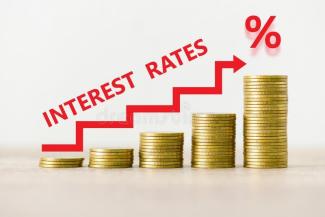
TINA vs TARA
Interest rates have rebounded from their historically low levels as illustrated by the table below. Treasuries are bonds (fixed-interest debt securities) issued by the U.S. government.
|
Treasury |
1/3/2022 Yield |
1/31/2023 Yield |
|
1 Year |
0.40% |
4.68% |
|
2 Year |
0.78% |
4.20% |
|
5 Year |
1.37% |
3.59% |
|
10 Year |
1.63% |
3.48% |
|
30 Year |
2.01% |
3.61% |
Source: U.S. Treasury, CNBC
What does this mean for your portfolio?
We are transitioning from a TINA environment to a TARA environment. TINA is the acronym for “There Is No Alternative” while TARA is the acronym for “There Are Reasonable Alternatives.” Last year, we reduced your exposure to bonds to protect your portfolio from a rising interest rate environment. We transitioned a portion of your bond (fixed income) positions into two market linked notes. These two notes each provided your portfolio with 40% downside protection and were three years in duration. Our thesis was that these investments would provide your portfolio with better risk adjusted returns than holding bonds. Bonds, as measured by the Bloomberg Aggregate Bond Index, have experienced a decline of -8.46% over the past year according to data obtained from Bloomberg.
How are interest rates and bond prices related?
When interest rates increase, bond prices decrease. In simple terms, if you own a bond yielding 0.4% and bonds are now yielding 4.68%, an investor will not purchase your bond when he or she can purchase a similar bond with a higher yield. In order for you to sell your bond, you will need to reduce the price of your bond to yield the current market rate of 4.68%. The price reduction will result in you losing money on your bond.
Today is “Fed Day.” How does that impact your portfolio?
Fed Day is when the Federal Reserve announces if they are either increasing, decreasing or making no change to short-term interest rates (Fed Funds Rate). The inflation rate, as measured by the Consumer Price Index, has declined from a peak of 9.1% in June 2022 to 6.5% in December 2022. The Fed’s actions since last March have resulted in slowing down parts of the economy. The housing market has experienced the greatest impact from rising interest rates as 30-year mortgage rates have increased from 3.11% at the end of 2021 to 6.13% as of January 26, 2023 according to data obtained from the St. Louis Federal Reserve. For a $500,000 loan, this amounts to an additional $902 in monthly mortgage payments. Those funds could be used for saving, investing or spending which impacts the overall economy. Raising interest rates is the quickest way for the Federal Reserve to reduce inflation.
What do we anticipate from today’s Fed Day?
We are anticipating that the Federal Reserve will again raise interest rates, but at a more moderate pace. Based upon the decline in inflation since June, we are anticipating a 25 basis points (0.25%) increase in short-term interest rates. Another 25 basis points increase is also expected at the Fed’s next meeting on March 22nd which will raise the Fed’s target rate to close to 5%. Assuming inflation continues to decline, we are expecting that the Fed will likely pause their tightening (hawkish) posture following their March meeting.
How is your portfolio impacted by the “There Are Reasonable Alternatives” environment?
We now have the opportunity to begin increasing your exposure to bonds within your portfolio as interest rates have risen significantly. Bonds have once again become “reasonable alternatives” as an investment. Bonds will play a more significant role in providing income and stability for clients who are seeking to reduce the overall volatility within their portfolio.
For clients who are seeking to maximize their potential long-term growth potential, we will continue to utilize equity linked notes and exchange traded funds (ETF’s) tied to various indices within their portfolios. While this will not reduce volatility, it will increase the potential long-term growth potential within their portfolios.
Please call or email us if you have any questions related to this memo or if you would like to review your current asset allocation. Asset allocation is the term used to describe the mix of stocks, bonds, and other asset classes within your portfolio.

